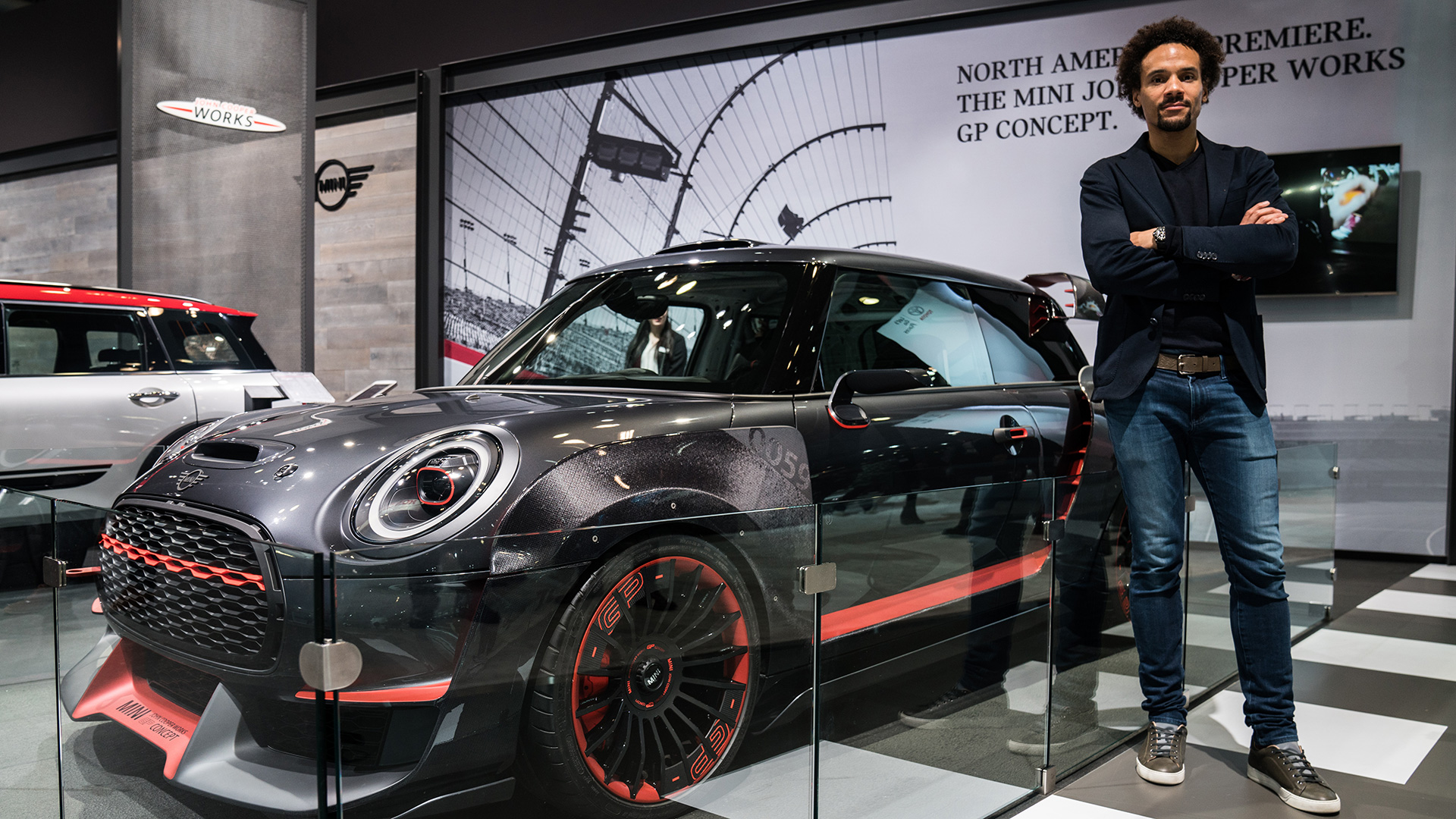

It’s no secret that 3D printing has already cracked its way into the automotive industry. Product managers use rapid prototyping—as they call it—to test parts during the development process for new cars; assembly-line engineers create their tooling via this additive manufacturing, the term they prefer; vintage car nuts can now turn to 3D printers to generate replacement parts for vintage vehicles, Hell, there are ongoing attempts to manufacture entire vehicles using the technology. Now, however, the wildly-versatile technology is even starting to influence how vehicles look, according to Oliver Heilmer, Mini’s head of design.
During a conversation at the 2018 New York International Auto Show last week, Heilmer used his most recent effort, the Mini John Cooper Works GP Concept—a adventurously-styled track-ready road car with notably floating fender flares—to illustrate the point. “We can do things now as designers that we couldn’t do before we had 3D printing,” Heilmer said. “This entire door panel is one piece, and when manufactured by 3D printing it’s much lighter. But we can also change the look and feel of it at any moment, even after the manufacturing starts, without having to create new tools to make it. Before this, it would take more than a year to make a change happen.”
The GP concept car includes multiple 3D-printed elements ranging from those doors to the center wheel locks. The benefit can be functional—in that the structural design throughout the element can be more precisely crafted, since 3D printers can handle more complex designs than any molds could generate. But Heilmer is most intrigued by the individualization prospects 3D printing presents. For example, the side scuttles—the design elements around the signal lights on the front fenders—can now be infinitely customized with designs, patterns, colors, and configurations based on the owner’s preferences.
“There’s an emotional aspect behind 3D printing. It frees up the design to allow personal bonding with your car,” he says. “Maybe it’s basic white or gray, or a pattern or design, like a heart or paper airplane. It might be playful or serious.”
3D’s customizability also extends to more utilitarian modifications, including allowing customers to design their own center-console storage spaces. But no matter what element of the car is being individualized, the point is that the process eliminates a long-standing limitations in vehicle manufacturing—the fact that you had to design around production capabilities.
“In the past with industrial design, you had to always remember that these pieces came out of a tool,” Heilmer said, adding that if the tooling technology couldn’t manage the part, the design would necessarily have to be changed. Eliminating that confine has liberated designers, who are now able to choose the material and then decide what we’re going to do with it, and then use advanced design programs to make it all happen.
Furthermore, as the technology advances, the benefits have continued to spiral, including the possibility of adjusting the actual printing process to alter the material composition or the speed with which it can produce the parts—an important factor, given that the new tech is still relatively slow compared to other manufacturing techniques. Though Heilmar says the results still don’t necessarily have that handmade feel to them, it’s getting better every year.
The future holds even more promise. We now have 3D knitting that enables designers to print fabrics in whatever shapes they need—which also speeds the assembly process and minimizes waste—and it enables the creation of intricate, customized fabric designs. And as we move into the world of autonomous driving, Heilmer sees a future where reduced need for heavy, confining structural components liberates designers still further, allowing them to still further push their creative boundaries. Whether it’s a revival of vintage styles—imagine a Mini that actually is mini again—or endless possibilities in the other direction, via more futuristic, individual, and daring designs, it’ll all be made real by the ability to print out whatever you like, however you like, unconstrained by manufacturing capabilities.